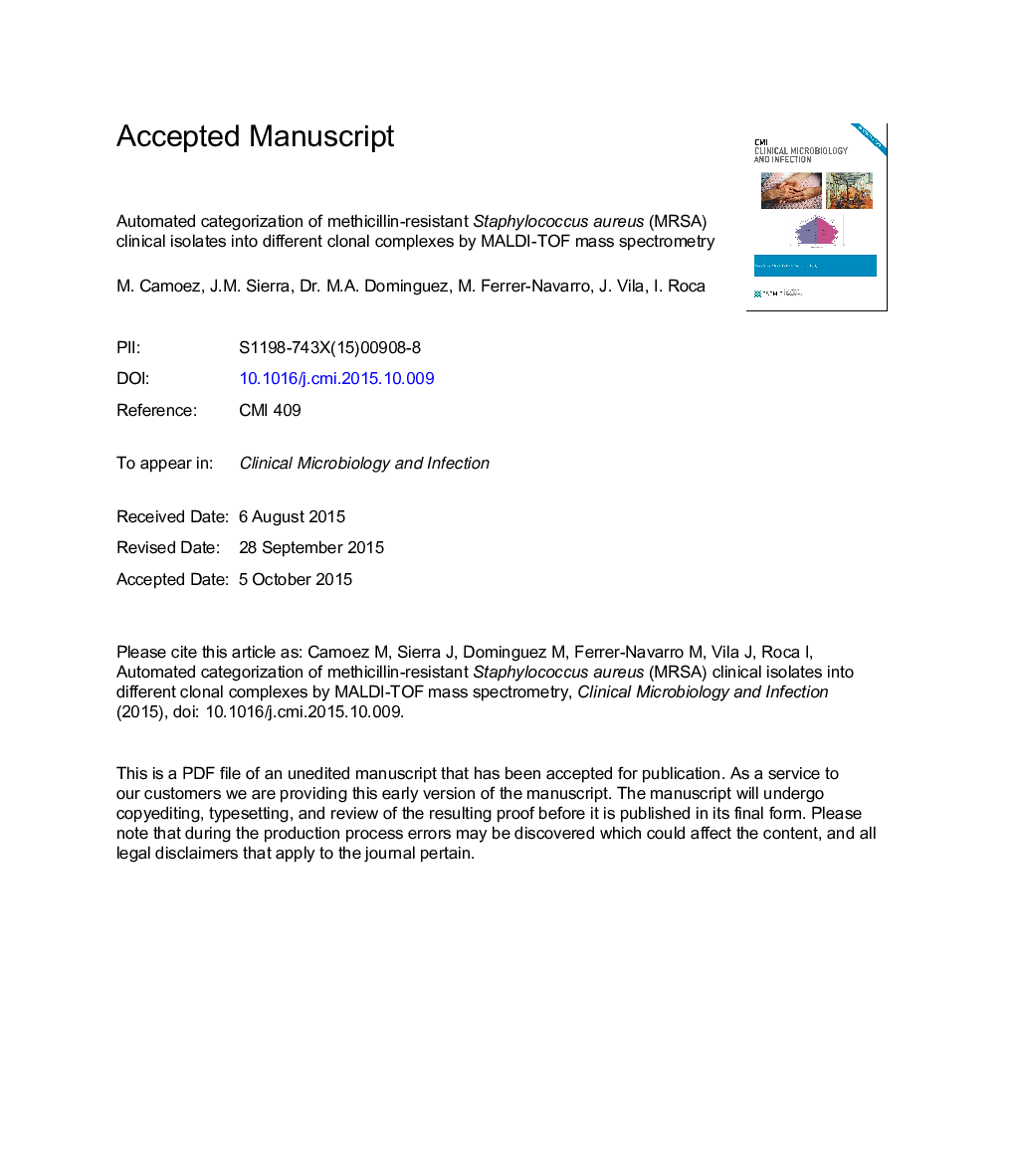| Article ID | Journal | Published Year | Pages | File Type |
|---|---|---|---|---|
| 6129025 | Clinical Microbiology and Infection | 2016 | 26 Pages |
Abstract
Early identification of methicillin-resistant Staphylococcus aureus (MRSA) dominant clones involved in infection and initiation of adequate infection control measures are essential to limit MRSA spread and understand MRSA population dynamics. In this study we evaluated the use of matrix-assisted laser desorption ionization time-of-flight mass spectrometry (MALDI-TOF/MS) for the automated discrimination of the major MRSA lineages (clonal complexes, CC) identified in our hospital during a 20-year period (1990-2009). A collection of 82 well-characterized MRSA isolates belonging to the four main CCs (CC5, CC8, CC22 and CC398) was split into a reference set (n = 36) and a validation set (n = 46) to generate pattern recognition models using the ClinProTools software for the identification of MALDI-TOF/MS biomarker peaks. The supervised neural network (SNN) model showed the best performance compared with two other models, with sensitivity and specificity values of 100% and 99.11%, respectively. Eleven peaks (m/z range: 3278-6592) with the highest separation power were identified and used to differentiate all four CCs. Validation of the SNN model using ClinProTools resulted in a positive predictive value (PPV) of 99.6%. The specific contribution of each peak to the model was used to generate subtyping reference signatures for automated subtyping using the BioTyper software, which successfully classified MRSA isolates into their corresponding CCs with a PPV of 98.9%. In conclusion, we find this novel automated MALDI-TOF/MS approach to be a promising, powerful and reliable tool for S. aureus typing.
Keywords
Related Topics
Life Sciences
Immunology and Microbiology
Microbiology
Authors
M. Camoez, J.M. Sierra, M.A. Dominguez, M. Ferrer-Navarro, J. Vila, I. Roca,
